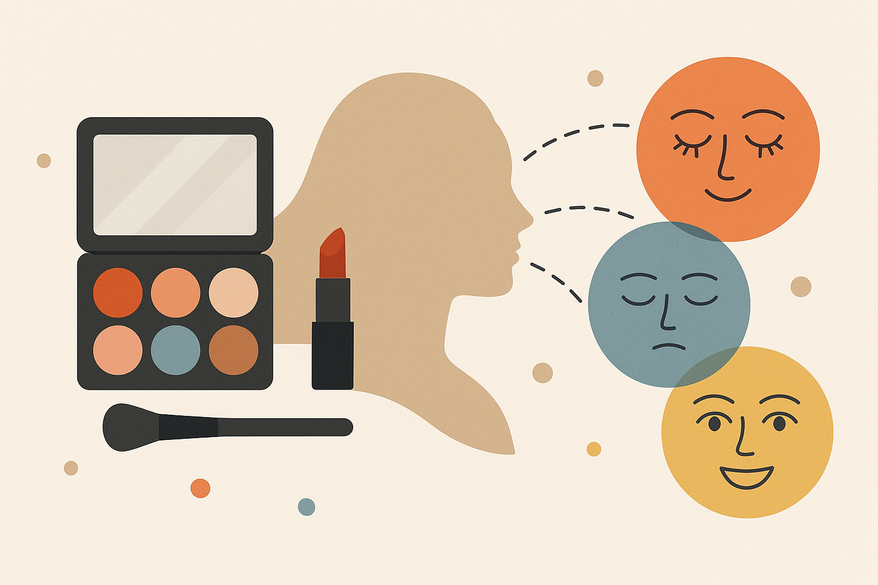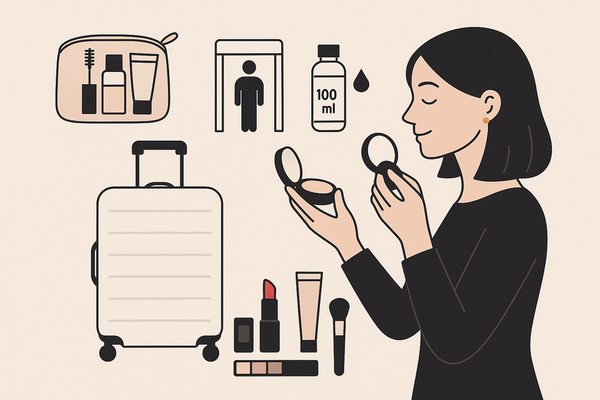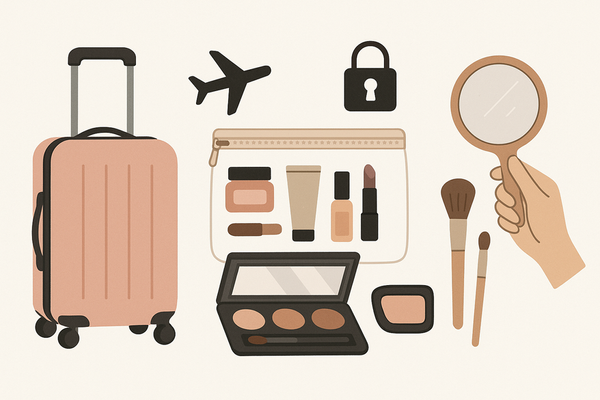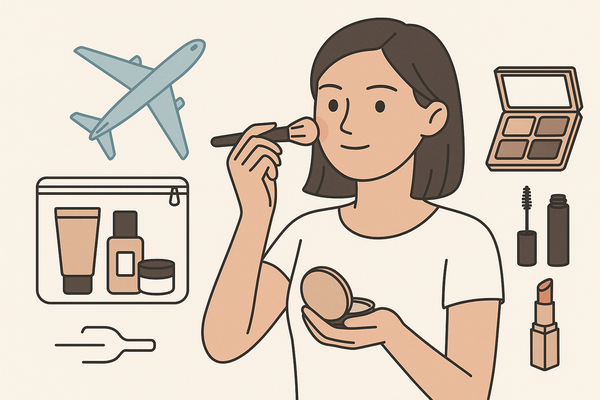Unlocking Color Psychology in Makeup: Enhance Your Mood with the Right Hues
Discover how color psychology in makeup can influence emotions and enhance mood. Learn the impact of different hues in achieving confidence, calmness, or energy.

Estimated reading time: 10 minutes
Key Takeaways
- Makeup uses color psychology to influence mood and emotions.
- Brands and artists strategically select hues for emotional resonance in products and packaging.
- Six fundamental colors (red, pink, blue, green, yellow, purple) each carry distinct psychological effects.
- Practical steps help match makeup hues to desired emotional goals.
- Real-world examples demonstrate mood transformation through color.
Table of Contents
- Introduction
- What Is Color Psychology? The Science Behind Emotional Hues
- How Makeup Artists and Brands Use Color Psychology
- Your Color Wheel: Emotional Effects of Key Makeup Hues
- Incorporating Color Psychology into Your Daily Beauty Routine
- Case Studies: Transformations Fueled by Color
- Conclusion & Call to Action
- FAQ
Introduction
"Color psychology in makeup explores how different hues influence our emotions and can be harnessed for mood enhancement." Ever noticed how a bold red lip can make you feel unstoppable? Our choices in lipstick, eyeshadow, or blush do more than accentuate features—they send signals to the limbic system, sparking feelings from confidence to calm.
To guide your exploration of emotional hues, try Makeup Check AI, which offers AI-driven makeup generation and shade analysis.
"Colors carry inherent meaning—shaped by culture, symbolism, age, and gender—and can trigger subconscious psychological and physiological responses." A Better Lemonade Stand on Color Psychology
"Different hues prompt measurable responses in the limbic system, influencing emotion and motivation." Collab Arts on Color Psychology for Beauty Brands
What Is Color Psychology? The Science Behind Emotional Hues
Color psychology studies how colors affect human emotions and behaviors. In beauty, it acts as a blueprint for selecting shades that resonate on a subconscious level.
Core Principles:
- Inherent Meaning & Symbolism
– Culture: Red signifies luck in Eastern traditions, but warning in Western contexts.
– Gender & Age: Younger audiences may prefer bright, playful pigments; older demographics lean into timeless neutrals. - Subconscious Processing
– Color stimuli travel to the limbic system—our brain’s emotional hub.
– These signals can alter heart rate, blood pressure, and hormonal responses.
Scientific Mechanism:
The limbic system—home to the amygdala and hippocampus—reacts to visual color stimuli. A flash of red might spike adrenaline and heart rate, while cool blues signal the brain to release calming neurotransmitters. This explains why a blue eyeliner can soothe, whereas a red matte lip can energize and empower. Collab Arts on Color Psychology
Marketing Parallel:
Marketers use the same science in branding and packaging. A study in consumer behavior found strategic hue selection increases purchase intent by up to 80%. Brands tap into emotional cues to build trust, urgency, or relaxation. Instapage Guide to Color Psychology
How Makeup Artists and Brands Use Color Psychology
Beauty brands and professional artists don’t choose shades at random. They craft palettes, packaging, and campaigns around emotional resonance—leveraging both art and science.
Industry Integration:
- Product & Packaging Hues
– Brands assign pinks for compassion, neutrals for balance, and bold tones for excitement.
– Custom boxes and brush handles use color cues to reinforce brand identity. A Better Lemonade Stand on Color Psychology - Customer Engagement & Sales
– A clinical trial reported a 25% increase in consumer focus when packaging matched emotional messaging. PMC Clinical Trial on Packaging and Focus
Examples of Brand Strategy:
- Pink Palettes
Evoke warmth and friendliness, ideal for spring or Valentine’s collections. - Earthy Neutrals
Communicate stability and luxury in prestige lines. - Vibrant Launches
Electric blues or magentas drive buzz for limited-edition drops.
Popular Makeup Trends Leveraging Color Psychology:
- Bold Red Lips
Instant confidence boost and sense of empowerment. Lipstick Shade Finder Guide - Soft Pastel Blushes
Approachability and calming vibes for everyday wear. - Graphic Eyeshadows
Electric blue or magenta for creative self-expression and playful energy.
Your Color Wheel: Emotional Effects of Key Makeup Hues
Six essential hues, their psychological meanings, and real-life makeup applications.
Red
- Emotional Impact: Confidence, passion, energy
- Makeup Look: Classic matte red lipstick to project power and assertiveness
- Tip: Pair with neutral eyelids to keep focus on lips
- Source: A Better Lemonade Stand on Color Psychology
Pink
- Emotional Impact: Compassion, happiness, optimism
- Makeup Look: Soft rosy blush or pink-toned lipstick for gentle vibrance
- Tip: Use a sheer formula for daytime calm or a vivid hue to stand out
- Source: A Better Lemonade Stand on Color Psychology
Blue
- Emotional Impact: Calm, trust, reliability
- Makeup Look: Subtle blue eyeliner or pastel blue eyeshadow for serenity
- Tip: Balance with warm neutrals to prevent a washed-out effect
- Source: Collab Arts on Color Psychology for Beauty Brands
Green
- Emotional Impact: Balance, harmony, nature
- Makeup Look: Emerald eyeshadow accents for a fresh, grounded appearance
- Tip: Ideal for evening looks when paired with smoky tones
- Source: Proportion London on Colour Psychology in Visual Merchandising
Yellow
- Emotional Impact: Happiness, cheerfulness
- Makeup Look: Graphic yellow liner or eyeshadow for a playful vibe
- Tip: Use thin lines or accents to prevent overwhelming the eyes
- Source: A Better Lemonade Stand on Color Psychology
Purple
- Emotional Impact: Creativity, luxury, wisdom
- Makeup Look: Deep purple lipstick or smoky violet eye for bold modernity
- Tip: Layer shades from lavender to plum for depth
- Source: Collab Arts on Color Psychology for Beauty Brands
Incorporating Color Psychology into Your Daily Beauty Routine
Use makeup as a tool for mood enhancement. Follow these steps:
- Define Your Emotional Goal
– Confidence: Reds or warm tones
– Calmness: Blues, greens, or pastels
– Creativity: Purples or unexpected color pops - Select Corresponding Hues
Match your goal to pigments in lipsticks, eyeshadows, and blushes. - Choose Intensity
– Monochrome Look: Bold single-color focus
– Subtle Accent: Colored liner, tinted mascara, or a light blush Minimalist vs Bold Makeup - Consider Context
– Lighting: Daylight vs. fluorescent bulbs can shift perceived shade. Collab Arts on Lighting and Color - Experiment & Track
Keep a mood journal of feelings after each look and adjust shade intensity or placement based on feedback.
Case Studies: Transformations Fueled by Color
Real-world evidence shows color choices change more than appearances—they shift mindsets.
Makeup Artist Anecdote
- A client, anxious before a big interview, applied vibrant red lipstick.
- Result: Reported feeling “unstoppable” and performed confidently.
- More on this story: Makeup for Self-Confidence
Brand Success Story
- A beauty brand launched a pastel eye collection during exam season.
- Outcome: 35% sales increase and glowing social media feedback praising its calming palette.
- Source: A Better Lemonade Stand on Color Psychology
User Testimonial
“After a long day, a soft blue eye look helps me unwind and feel centered.” A working mom shares her daily ritual.
Conclusion & Call to Action
Color psychology in makeup offers more than aesthetic appeal—it’s a pathway to mood enhancement and personal empowerment. We’ve covered:
- The science behind emotional hues
- Industry strategies and brand examples
- Six key colors and their impacts
- Practical routine steps for daily mood boosts
- Real transformations from artists, brands, and users
Ready to experiment? Swap your go-to nude for a bold red or pastel blue next time you need an emotional pick-me-up. Share your favorite mood-boosting shade in the comments below and subscribe for more beauty-science insights!
FAQ
What is color psychology in makeup?
Color psychology in makeup examines how different hues influence emotions and behaviors, using shade selection to boost confidence, calm nerves, or spark creativity.
Which makeup colors boost confidence?
Bold reds and warm tones are known to enhance feelings of power and assertiveness, making them ideal for situations where you want to feel confident and energized.
How do I choose the right hue for my mood?
Define your emotional goal—confidence, calm, or creativity—and select corresponding pigments: reds for assertiveness, blues or greens for tranquility, purples for imaginative flair.
Can lighting affect how makeup colors appear?
Yes. Natural daylight may render hues differently than indoor fluorescent or LED lighting, so test your chosen shades under the conditions you’ll be in.
How can I track the impact of my makeup choices?
Keep a simple mood journal after each look, noting your emotional state and any changes. Over time, patterns will emerge, helping you refine your palette for consistent results.




